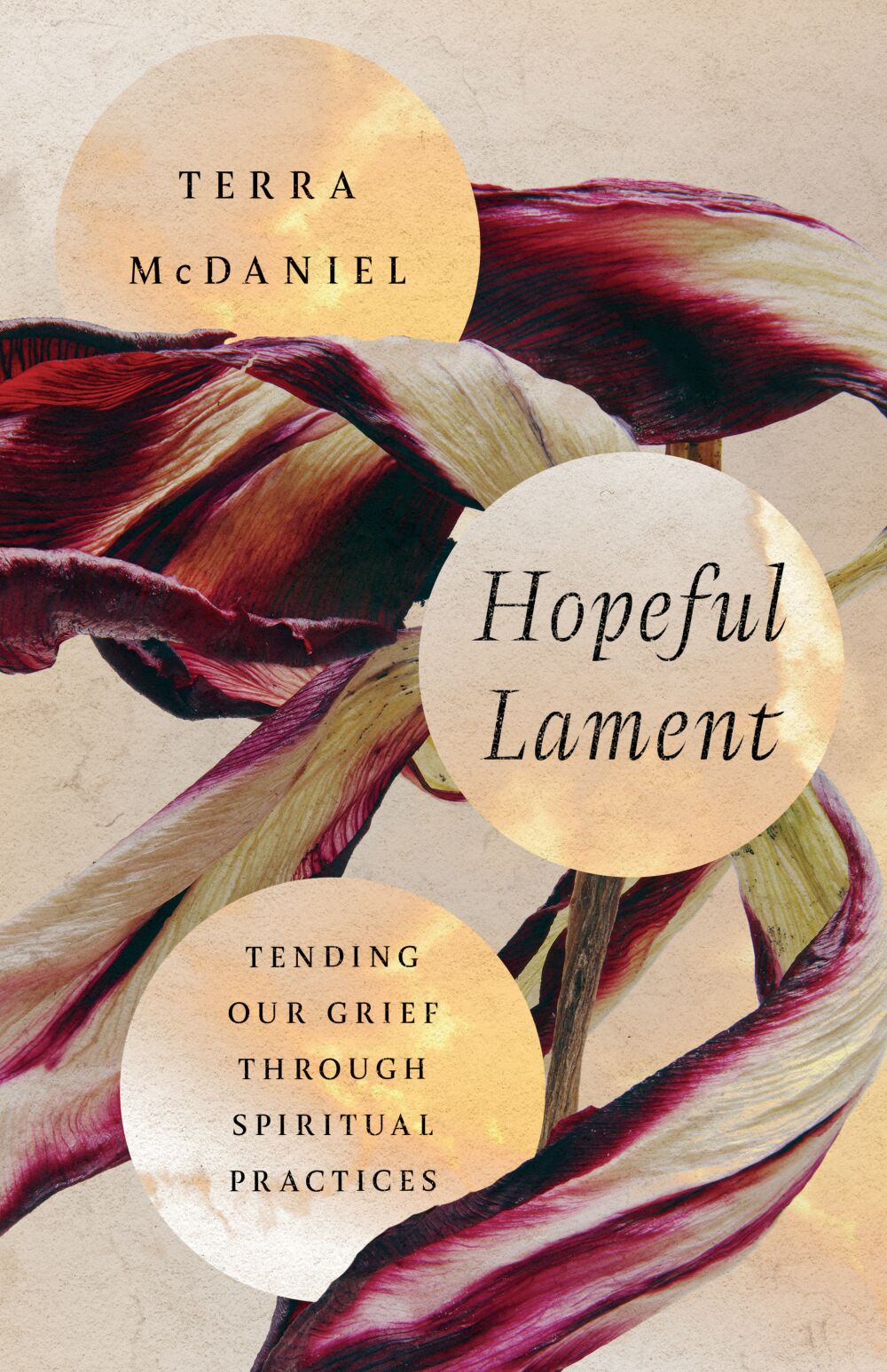The Slow, Sacred Work of Lament
By Terra McDaniel, Author of Hopeful Lament
Lament is a profoundly spiritual act because grief and loss are just as sacred as trust and celebration. It is freedom to express pain and allow Love into our sorrows with us. It metabolizes grief, honoring our experiences as beings with bodies, souls, and spirits.
Lament is woven through Scripture and our shared histories, including practices of writing, singing, or otherwise enacting grief. It is visceral—smearing ashes, tearing fabric, crying aloud, or allowing tears to flow. Such things have been forgotten or suppressed for too many, often through misbegotten notions of faithfulness. In her book A Hole in the World, Amanda Held Opelt contends "most of us long to be sophisticated in our bereavement. It seems we are most lauded in our grief for being strong, for not allowing ourselves to be overcome. . . we are affirmed for our composure, praised for our resilience." I wrote Hopeful Lament because I learned by experience that attempts to avoid grief paradoxically leave us stranded in sorrow.
When loved ones are gone, the gifts and sometimes hardest moments of their lives must be remembered even as our lives continue. Absence must be acknowledged. When we experience illness, broken relationships, and other less visible sources of grief, we mourn. We weep on behalf of others who encounter pain. We hold collective sorrows like the compounded and ongoing losses of the pandemic, cultural division, and natural disasters. Ours is a time when a reimagining of practices that address individual and communal suffering is essential. All such things are part of the sacred work of lament.
In her book Sparrow Jan Richardson says, "grief moves by turns and spirals, a twisting path that I am not sure can even be called a path because it is not always that clear or orderly." A dear friend who lost her partner told me she'd learned that time isn't linear. Tending sorrow is often more like walking a labyrinth, including journeys inward, sacred moments of centering in quiet and stillness, and returns to dreams of resurrection. The Holy One who is a Man of Sorrows has capacity for our desolation and our consolation, for Lent as well as Easter.
Labyrinth walking is a practice that reflects life as pilgrimage toward connection with the Spirit and our truest selves. It illuminates the reality that we aren't stuck in place but are invited to respond to life as it is, rather than as we might wish it was. Labyrinths spiral yet always lead to a trustworthy center where we are welcome as we are. We don't need to suppress our questions before God. They also model the possibility of moving forward carrying wisdom and mercy received from the throne of Grace with outward journeys that loop and twist just as the trip inward did. Because life is like that.
Labyrinths teach us that steps which appear to be taking us a direction we don't want to go can eventually lead to safety. They are one way to discover lament as a kind of prayer which fosters healing and resilience. They are a chance to recognize God longs to meet us in places of pain.
Lament honors the past, lives the present courageously, and dares hope for redemption. Rilke wrote God whispers as we're made, "Let everything happen to you: beauty and terror. Just keep going. No feeling is final. Don't let yourself lose me."
Go carefully as you practice lament. It is good but never easy work. Know your soul has room for major and minor keys and that God considers your tears and restless nights as treasures (Psalm 56:8).
To walk a labyrinth to tend your burdens, try talking to God about your pain on the way inward. Stay in the center for at least three deep breaths, one for each Person of the Trinity. As you travel outward, what do you notice? How does the Spirit accompany you? Is it in silence? Do you sense a response of some kind? Are you reminded of a memory or passage of Scripture?
You can walk a labyrinth alone or invite your family or community to practice walking one together. If you find it hard to access a physical labyrinth, you could try a finger labyrinth. Here is one simple way to create your own.





